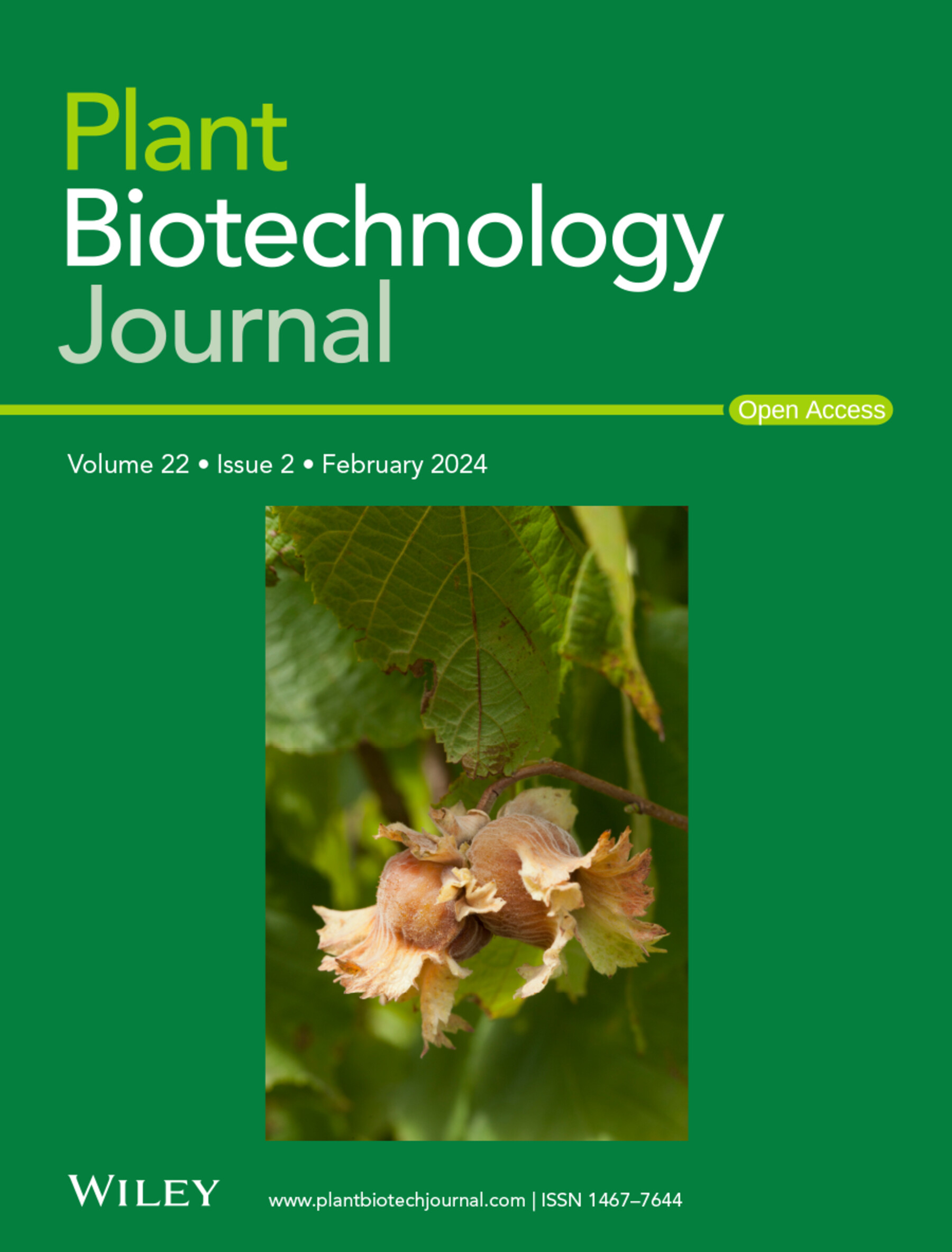Divergent MYB paralogs determine spatial distribution of linalool mediated by JA and DNA demethylation participating in aroma formation and cold tolerance of tea plants
IF 10.1
1区 生物学
Q1 BIOTECHNOLOGY & APPLIED MICROBIOLOGY
引用次数: 0
Abstract
Linalool not only is one of characteristic flavour volatiles of tea, contributing to floral aroma, but also a kind of defensive compounds, playing essential roles in resistance against biotic/abiotic stresses. Although the linalool synthases have been identified, much is unknown about the regulation mechanism in tea plants. We identified two pairs of MYB paralogs as linalool biosynthesis activators, in which one pair (CsMYB148/CsMYB193) specifically expressed in flowers, and another (CsMYB68/CsMYB147) highly expressed in flowers, leaves, fruits and roots. These activators interacted with CsMYC2 to form MYC2-MYB complexes to regulate linalool synthase. While Jasmonate ZIM-domain (JAZ) proteins served as the linalool biosynthesis repressors by interfering MYC2-MYB complex. Further, we found that the transcripts of CsMYB68/CsMYB147 were significantly upregulated by jasmonic acid (JA) to improve linalool products during tea processing and that linalool pathway may as one of the downstream pathways of JA signalling and DNA methylation processes to participate in cold resistance. Under cold stress, JA signalling was activated to elevate the abundance of MYC-MYB complexes; meanwhile, DNA demethylation was also activated, leading to declining methylation levels and increasing transcripts of CsMYB68/CsMYB147. Our study provides a new insight into synergistically improving tea quality and tea plant resistance.求助全文
约1分钟内获得全文
求助全文
来源期刊

Plant Biotechnology Journal
生物-生物工程与应用微生物
CiteScore
20.50
自引率
2.90%
发文量
201
审稿时长
1 months
期刊介绍:
Plant Biotechnology Journal aspires to publish original research and insightful reviews of high impact, authored by prominent researchers in applied plant science. The journal places a special emphasis on molecular plant sciences and their practical applications through plant biotechnology. Our goal is to establish a platform for showcasing significant advances in the field, encompassing curiosity-driven studies with potential applications, strategic research in plant biotechnology, scientific analysis of crucial issues for the beneficial utilization of plant sciences, and assessments of the performance of plant biotechnology products in practical applications.
 求助内容:
求助内容: 应助结果提醒方式:
应助结果提醒方式:


